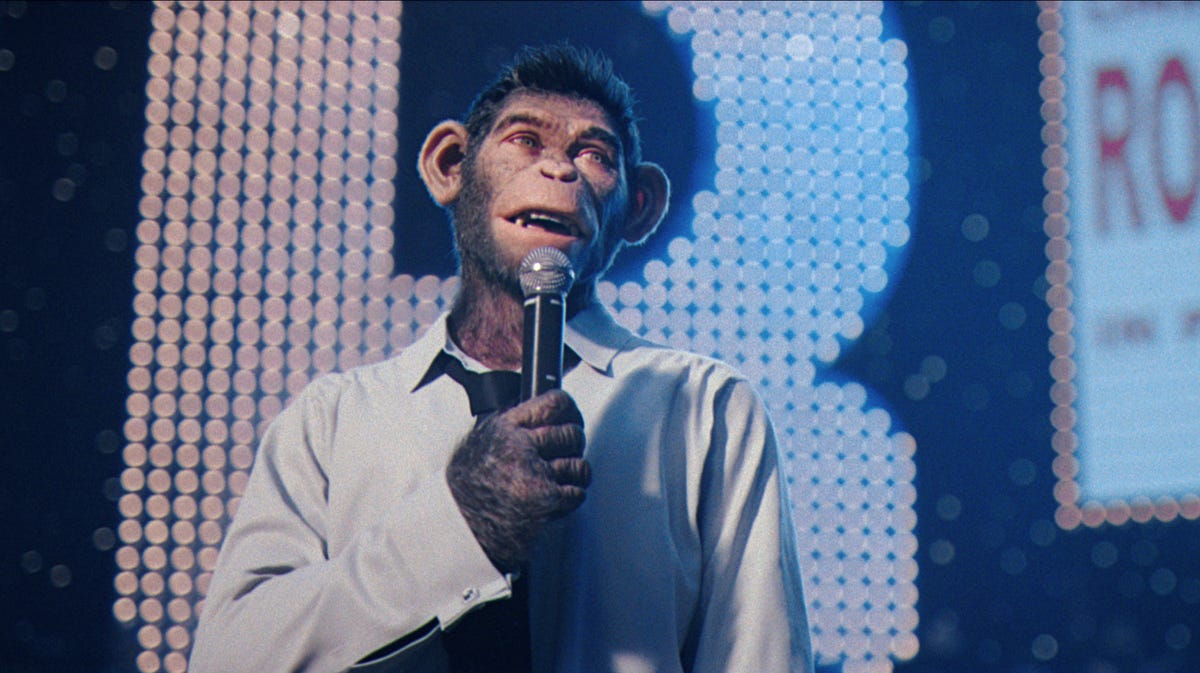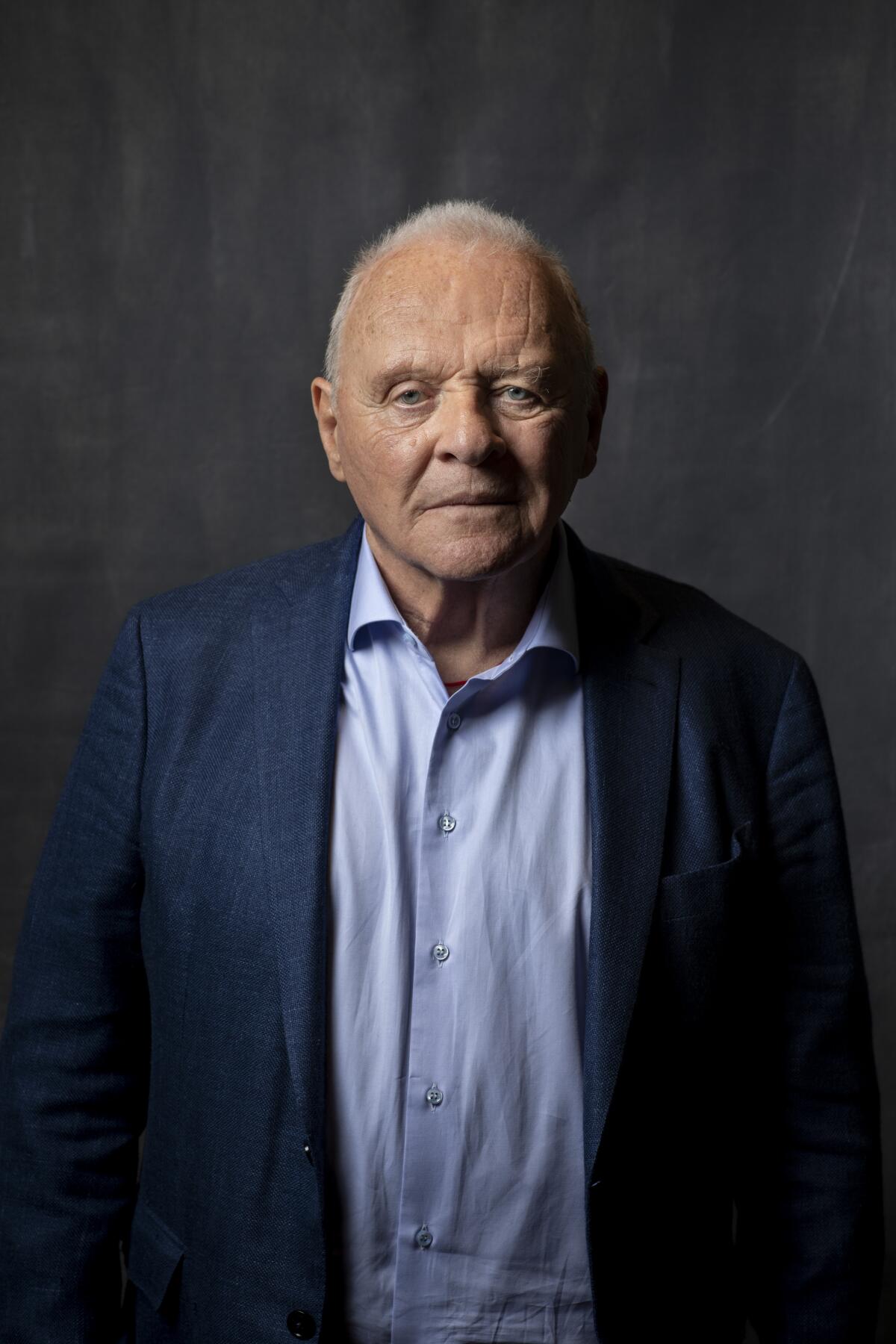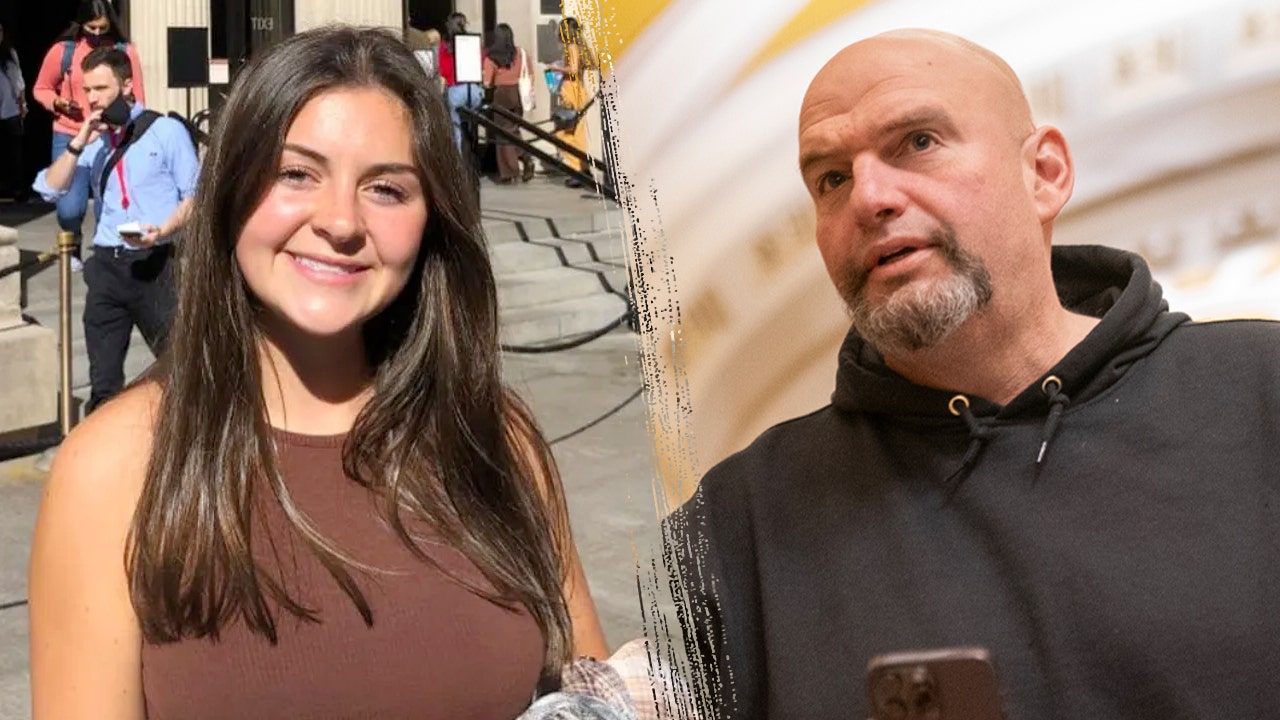Entertainment
Earl Holliman, Golden Globe winner known for 'The Rainmaker,' 'Police Woman,' dies at 96

Earl Holliman, whose prolific acting career included a Golden Globe-winning role in “The Rainmaker” and TV series such as “Police Woman,” has died. He was 96.
Holliman died Monday afternoon at his home in Studio City, his husband, Craig Curtis, told The Times. No cause of death was given.
The actor, square-jawed and with a unique high and soft but compelling voice, made his mark in film and TV as well as theater. He appeared in more than 50 movies and nearly 50 television shows, beginning in the early 1950s.
He may be best known for his role as Lt. Bill Crowley, macho counterpart to undercover cop Angie Dickinson on “Police Woman” from 1974 to ’78.
Holliman told The Times in 1993 that his fondest memory of the show was his friendship with Dickinson. He recalled moving into an unfurnished house and putting off the decorating only to return from a film project to find she had had his house fully furnished while he was away.
The actor won a supporting actor Golden Globe for “The Rainmaker” in 1956, starring opposite Katharine Hepburn and Burt Lancaster.
“It was my first co-starring part,” Holliman said in a 1975 interview of his role as Jimmy Curry, brother to Hepburn’s Lizzie. But it didn’t come easy. “I had to fight to get a test for it,” he said. But, he said, “Working with Katharine Hepburn was the joy of my life.”
That same year, the actor appeared in the movie “Giant” as Bob Dace, son-in-law of the characters played by Rock Hudson and Elizabeth Taylor. Other classics he was a part of include 1957’s “Gunfight at the O.K. Corral” and “The Sons of Katie Elder” in 1965.
Earl Holliman sits with fellow actors Angie Dickinson, center, and Susan Strasberg at Boston’s Park Plaza Hotel in 1983. The three had appeared at a rally protesting abuse of laboratory animals.
(Sean Kardon / Associated Press)
He was also, notably, in the first episode of “The Twilight Zone,” which premiered in October 1959. He played a man with amnesia in “Where Is Everybody?” Other TV series that he starred in include “Hotel de Paree” (1959-60) and “Wide Country” (1962-63).
Holliman talked with The Times in 1993 about his years doing live television, which he said was an adrenaline rush.
He recalled of one show: “At the end of the first act, I was up to my neck in quicksand. As I’m being rescued, I have 90 seconds to have the folks backstage strip me down to a jockstrap, rinse me off, change my clothes, and I have to get on the other side of the stage for the next act, which has me cracking open a coconut. …
“Sometimes, when they had a close-up on your face, your wardrobe was being changed. You’d be talking to someone who had long gone for their own costume change. I think all the actors who did that live television really miss that stuff.”
Holliman was born Sept. 11, 1928, in Delhi, La. He was adopted at a week old, according to the Hollywood Reporter. When his new parents saw him, “I was sick and they took me right away to the doctor, who apparently said, ‘You don’t have a baby here, you have a funeral expense.’ They paid the midwife $7.50 for me — this was in the backwoods of Louisiana.”
As a teen, he hitchhiked to Los Angeles, using money that he’d saved from working as a movie theater usher and in other small jobs. He soon ran out of money and had to return home, where he enlisted in the Navy. But when they discovered he was only 15, he was discharged.
He later reenlisted and while stationed in Norfolk, Va., took part in Navy theater productions. After his service, he went west again and worked on his craft at UCLA and the Pasadena Playhouse.
Holliman was also an animal rights activist and served as president of Actors and Others for Animals for decades. In 1977, he received a star on Hollywood’s Walk of Fame.
He is survived by husband Curtis and a handful of nieces and nephews.

Movie Reviews
‘Better Man’ movie review: Robbie Williams is a chimp. (Just go with it.)

Robbie Williams talks Golden Globe-nominated film ‘Better Man’
Robbie Williams and wife Ayda Field tell USA TODAY’s Ralphie Aversa what it feels like to be at the Golden Globes.
Music biopics are too often predictable, formulaic and, let’s face it, dull. One way to liven them up, however, is to venture way outside the box and make the central subject an anthropomorphic animal. And while an alligator Freddie Mercury in “Bohemian Rhapsody” or a sloth Bob Dylan in “A Complete Unknown” might have been bridges too far, a chimpanzee Robbie Williams defies logic and somehow works in “Better Man.”
Director Michael Gracey’s admirably eccentric biopic/jukebox musical (★★★ out of four; rated R; in select theaters now, nationwide Friday) still boasts the signature tropes of its ilk and the career-tanking vices of many a “Behind the Music” episode. Yet the fact that the ultra-cheeky Williams is inexplicably presented as a bawdy CG ape man (given cool moves and voice via performance capture by Jonno Davies) matches the fantastical nature of the British pop star’s bananas rise-and-fall-and-rise-again tale.
Join our Watch Party! Sign up to receive USA TODAY’s movie and TV recommendations right in your inbox.
The movie also has a lot in common with Gracey’s most famous effort, “The Greatest Showman,” featuring well-crafted, effervescent musical numbers doing what they can to make up for oversentimentality and an unfocused narrative.
Narrated by Williams himself, “Better Man” chronicles his life starting as a little simian dude playing soccer in the streets with his mates – and failing to impress his peers. Like his father Peter (Steve Pemberton), Robbie wants to be somebody and slowly he begins to embrace a charismatic, wild-child personality that wins him a spot in the boy band Take That. His brazen and outrageous personality wins over some like pop-star girlfriend Nicole Appleton (Raechelle Banno) – and his many fans – but irks many others, from his bandmates and manager (Damon Herriman) to members of Oasis.
The middle of the movie is where “Better Man” finds its groove. Robbie sings “Rock DJ” and his group pogo-sticks through London’s busy Regent Street in the film’s most spectacular sequence. And as the insecure Robbie goes down a bad path, he’s forced to literally fight the conflicting parts of his pop-star persona. Drugs and being a selfish jerk threaten everything, of course, and seeing a chimp go through the out-of-control partying instead of a normal dude is a bit different. The family drama peppered through the film leans too earnest, leading to an ending that pours on the schmaltz way too hard. Brash simian Robbie is a lot more fun to watch than soppy simian Robbie.
No one’s ever going to play a primate like the brilliant Andy Serkis in his “Planet of the Apes” films. Davies does a good job at moving in such a way that’s human but also a little bit wild, which adds to the hyperrealism of a proudly oddball movie. It doesn’t completely explain why exactly Williams is a chimp in the biopic – he’s said he feels “less evolved” than others, and Nicole calls Robbie an “animal” during a fight – but it makes that bizarre choice a little less head-scratching.
Interestingly, the best part of “Better Man” is Williams. He sings the songs throughout the movie – including nifty new tune “Forbidden Road” – and his fabulous narration hilariously slings jabs and adds an emotional gravitas to his screen counterpart’s struggles. When the film goes most over the top, Williams’ commentary keeps it grounded.
“Better Man” isn’t perfect – as a straightforward effort, it doesn’t hold a candle to, say, “A Complete Unknown.” But it’s never boring, either. And the film is easily the most idiosyncratic of its kind, at least until that inevitable Barry Manilow biopic featuring a yeti.
Entertainment
Among tens of thousands of displaced Angelenos, celebrities face the same devastating losses

The historic wildfires blazing across Los Angeles County this week have wiped out more than 2,000 structures, killed at least five people and left countless residents reeling in heartbreak. Given the fabric of the communities in and around L.A., celebrities are among those facing loss.
In one of the most destructive firestorms to hit the region in recent memory, at least 130,000 Angelenos have fled for safety as fires — stoked by worse-than-usual “life-threatening and destructive” winds — rampaged in the Pacific Palisades, Hollywood Hills and Altadena.
“We are absolutely not out of the danger yet,” Los Angeles Fire Department Chief Kristin Crowley said Wednesday.
From Mandy Moore to Chrissy Teigen and John Legend, stars have have been speaking out about their evacuation efforts, loss of property and efforts to help fire victims. While they, like so many Angelenos, remain displaced, firefighters continue to battle the blazes that have erupted since Tuesday.
Paris Hilton
Paris Hilton said she watched her Malibu home burn on television.
(Christina House / Los Angeles Times)
“Heartbroken beyond words. … Sitting with my family, watching the news, and seeing our home in Malibu burn to the ground on live TV is something no one should ever have to experience,” the deejay, reality TV star and heiress wrote Wednesday on Instagram as the 0% contained Palisades fire continued to burn. “This home was where we built so many precious memories. It’s where Phoenix took his first steps and where we dreamed of building a lifetime of memories with London.
“While the loss is overwhelming, I’m holding onto gratitude that my family and pets are safe. My heart and prayers are going out to every family affected by these fires. To all the people who have lost their homes, their memories, and their beloved pets. My heartaches for those still in harm’s way or mourning greater losses. The devastation is unimaginable. To know so many are waking up today without the place they called home is truly heartbreaking. … Please, everyone, stay safe and follow evacuation orders. Let’s protect one another and hold onto hope that these fires will soon be contained.🙏 Sending so much love and strength to all of you. We’re in this together, LA. … Hug your loved ones a little tighter tonight. You never know when everything could change.”
Mandy Moore

Many Moore said goodbye to her Altadena home via an Instagram post.
(Christina House / Los Angeles Times)
“I love you, Altadena,” the “This Is Us” star wrote Wednesday on Instagram as she drove through her community, which was struck by the Eaton fire. “Grateful for my family and pets getting out last night before it was too late (and endless gratitude to friends for taking us in and bringing us clothes and blankets). Honestly, I’m in shock and feeling numb for all so many have lost, including my family. My children’s school is gone. Our favorite restaurants, leveled. So many friends and loved ones have lost everything too. Our community is broken but we will be here to rebuild together. Sending love to all affected and on the front lines trying to get this under control.”
Billy Crystal

Janice Crystal and Billy Crystal lost their Pacific Palisades home of 45 years.
(Charles Sykes / Invision / Associated Press)
“Words cannot describe the enormity of the devastation we are witnessing and experiencing,” Billy Crystal and his wife, Janice, said in a joint statement to the Associated Press about their Pacific Palisades home. “We ache for our friends and neighbors who have also lost their homes and businesses in this tragedy. Janice and I lived in our home since 1979. We raised our children and grandchildren here. Every inch of our house was filled with love. Beautiful memories that can’t be taken away. We are heartbroken of course but with the love of our children and friends we will get through this.”
Steve Guttenberg

Interviewed on TV while evacuating from Pacific Palisades, Steve Guttenberg urged people not to abandon their cars without leaving their keys behind.
(Richard Shotwell / Invision / Associated Press)
In what might be the most viral celebrity interview of the fire news cycle, the “Police Academy” star told a KTLA reporter on Tuesday that he had been working to clear abandoned cars on Sunset Boulevard and Palisades Drive in his neighborhood to make a path for fire trucks and emergency vehicles. He did not indicate the condition of his home, but said later on the “Today” show that he would go back soon to see what was left.
“What’s happening is people take their keys with them as if they’re in a parking lot. This is not a parking lot. We really need people to move their cars,” the longtime Pacific Palisades resident said. “If you leave your car behind, leave the key in there so a guy like me can move your car so that these fire trucks can get up there.”
Cameron Mathison

Cameron Mathison showed footage of his burned home.
(Jordan Strauss / Invision / Associated Press)
“General Hospital” star Mathison shared footage from his street showing the destruction that overtook his block in the Pacific Palisades, noting on Instagram stories that “the last property is where our house was.” Mathison said he and his family are safe but showed footage of “what’s left of our beautiful home.”
In an appearance on “Cuomo,” the soap star said his family is safe but the losses have been devastating.
“I’ve never experienced anything like it. It just doesn’t feel real and I know I’m not alone. I know there’s hundreds, if not thousands of people out there and getting affected by these fires, and it’s very cool to see you kind of touching base with a lot of them to share their stories too,” Mathison said, adding, “That video was taken early in the morning … we’d been up, we’d been watching the news, and then I got up around 5, and they were reporting from our block, and I could see houses going down, and it looked insane, but I couldn’t see if our house was OK, and I couldn’t stand it anymore, and I got my car, and I just kind of drove in through the streets. … I kind of made my way up almost in the dark, and the cloud, like, it was, it was an insane scene. And as I came around the corner, you know what used to be, my house, our house was, was no longer and it is, it doesn’t, doesn’t seem real.”
Diane Warren

Diane Warren lost her beach house in Malibu.
(Dania Maxwell / Los Angeles Times)
“This is the last pic I took of Leah’s rock from my beach house,” the Grammy-winning songwriter wrote Wednesday on Instagram, sharing a photo from a Malibu beach amid the Palisades fire. “I’ve had this house for almost 30 years. It looks like it was lost in the fire last nite. There’s a rainbow shining on it which I’m taking as a sign of hope for all creatures who have been affected by this tragedy. The animals and the rescue ranch are OK tho which is the most important thing. Stay safe everyone.”
Melissa Rivers

Melissa Rivers fled her Palisades-area home with important documents and irreplaceable items connected to her late mother, Joan Rivers.
(Al Seib / Los Angeles Times)
Rivers, a TV personality and the daughter of famed comic Joan Rivers, told CNN that she fled her Palisades-area home on Wednesday and took whatever she could, including her mother’s Daytime Emmy Award for “The Joan Rivers Show.”
“Luckily, my office which is in — was in — my home… [I grabbed] whatever was there,” Melissa Rivers said. “In my personal situation, that’s it, that’s the end of everything that belonged to my family and the history of it. To be 100% honest, I grabbed my mom’s Emmy, a photo of my dad, and a drawing that my mother had done of me and my son … It’s amazing what you grab, it’s amazing what you take. I went for a drawing of my mother’s rather than a photo because I know I can find the photos. [But a drawing of hers] I can’t replace.”
Cary Elwes

Cary Elwes said he lost his home in the Palisades fire that also affected Malibu.
(Chris Pizzello / Invision / Associated Press)
“Update from the fire. Firstly, myself and my family are all safe, thank God,” “The Princess Bride” star wrote Wednesday on Instagram after the Palisades fire broke out. “Sadly we did lose our home but we are grateful to have survived this truly devastating fire. Our hearts go out to all the families impacted by this tragic event and we also wish to extend our gratitude to all the firefighters, first responders and law enforcement who worked so tirelessly through the night and are still at it. We want to thank everyone for the incredible outpouring of support. It really means a great deal to us.”
Ricki Lake

Ricki Lake lost her “dream home” overlooking Malibu in the Palisades fire.
(Amy Sussman / Getty Images)
“It’s all gone. I can’t believe I am typing these words,” the former talk-show host wrote Wednesday on Instagram, sharing the loss of her “dream home.” “After a valiant and brave effort by our friend and hero @kirbykotler_ Ross and I lost our dream home. This description ‘dream home’ doesn’t suffice. It was our heaven on earth. The place where we planned to grow old together. We never took our heavenly spot on the bluff overlooking our beloved malibu for granted, not even for one second. I shared our sunset views almost daily with all of you.
“This loss is immeasurable. It’s the spot where we got married 3 years ago. I grieve along with all of those suffering during this apocalyptic event. Praying for all of my neighbors, my friends, my community, the animals, the firefighters and first responders. More to share soon of how we escaped with Dolly and not much else. For now I grieve.”
James Woods

James Woods lost his newly renovated Pacific Palisades home.
(Evan Agostini / Invision / Associated Press)
The Emmy-winning actor fought back tears on air with CNN while discussing his newly renovated Pacific Palisades home and its evacuation during the Palisades fire. He said he and his wife, Sara Miller-Woods, had returned to the home last month after fixing up the property,
“I took this from the deck of our beautiful and much beloved home in the Palisades last night,” Woods wrote Wednesday on Instagram. “Now all the fire and smoke alarms are going off on our iPhones. It’s truly heartbreaking.”
Leighton Meester and Adam Brody

Leighton Meester, left, and Adam Brody reportedly lost their Pacific Palisades home.
(Jordan Strauss / Invision / Associated Press)
The “Gossip Girl” alumna, who is married to the “Nobody Wants This” actor, reportedly lost the Pacific Palisades home that they purchased in 2019, according to TMZ and the Daily Mail. The couple has not yet commented publicly on the fires.
Anthony Hopkins

Anthony Hopkins reportedly lost his Pacific Palisades property.
(Jay L. Clendenin / Los Angeles Times)
Hopkins lost his $6-million Pacific Palisades home, the Daily Mail reported. The Oscar winner bought the home in 2001, and photos showed the four-bedroom, five-bath property reduced to rubble.
Evacuations
John Legend and Chrissy Teigen

Chrissy Teigen and John Legend left their Hollywood Hills home and took their four children and pets to a hotel Wednesday.
(Evan Agostini / Invision / Associated Press)
“This is surreal. I’m very scared now. packing,” Teigen wrote on Instagram stories as the Sunset fire erupted late Wednesday in the Hollywood Hills. “4 dogs. 4 kids and a bearded dragon walk into a hotel,” she added.
Mark Hamill

“Star Wars” star Mark Hamill said on social media that his area was being evacuated.
(Rich Fury / Getty Images)
“Personal Fire Update: 7pm-Evacuated Malibu so last-minute there small fires on both sides of the road as we approached PCH. 8:15 pm- Marilou, Trixie & I arrive at Chelsea’s house in Hollywood Most horrific fire since ‘93 … STAY SAFE! … ” the “Star Wars” star wrote Tuesday on Bluesky, later clarifying that “there ‘were’ small fires (gimme a break- we were fleeing for our lives).”
Movie Reviews
Research: How Top Reviewers Skew Online Ratings

-

 Business1 week ago
Business1 week agoThese are the top 7 issues facing the struggling restaurant industry in 2025
-

 Culture1 week ago
Culture1 week agoThe 25 worst losses in college football history, including Baylor’s 2024 entry at Colorado
-

 Sports1 week ago
Sports1 week agoThe top out-of-contract players available as free transfers: Kimmich, De Bruyne, Van Dijk…
-

 Politics1 week ago
Politics1 week agoNew Orleans attacker had 'remote detonator' for explosives in French Quarter, Biden says
-

 Politics7 days ago
Politics7 days agoCarter's judicial picks reshaped the federal bench across the country
-

 Politics5 days ago
Politics5 days agoWho Are the Recipients of the Presidential Medal of Freedom?
-

 Health4 days ago
Health4 days agoOzempic ‘microdosing’ is the new weight-loss trend: Should you try it?
-

 World1 week ago
World1 week agoIvory Coast says French troops to leave country after decades


















